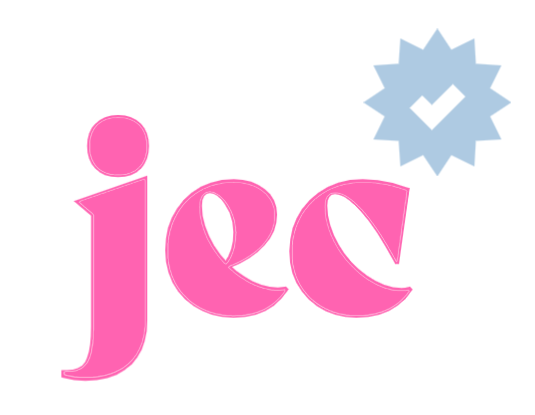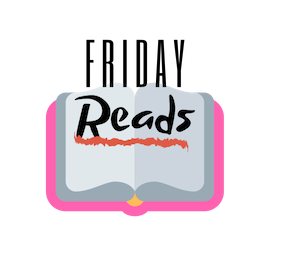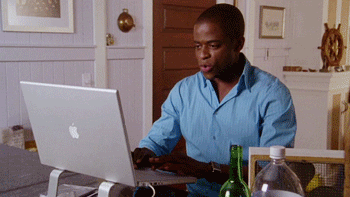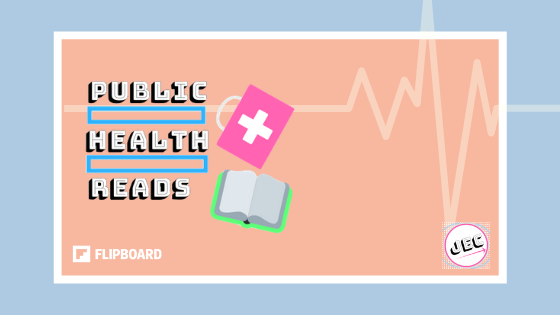
Friday Reads is a series I’ve been doing every Friday over on my LinkedIn page. I share articles that have piqued my interest, especially around topics and headlines from that week. Here’s my last roundup of 2020. Have a great time reading over your holiday break!
See my previous lists.
SEPTEMBER 2020
Week of September 14 – 18
Title of Article: Why I Alwaysve Two Jobs (Zora by Medium)
Quick Analysis: This is a very good article that I can definitely relate to.
Excerpt: “My biggest takeaway from watching the entrepreneurial journeys of both my parents was that in order to achieve any level of success I would have to work harder and sacrifice more than most. I learned that there would be many things I cannot control in life and business — but the one thing I can always control is what I put into achieving any goal. I learned that racism would play a role in my journey, but I must never let it knock me off my path. I also realized that because of the turbulence of their entrepreneurial paths, my parents were not in a position to help me financially as I transitioned into adulthood. I decided that I should put myself in a position to help them, my family and community, instead.”
Week of September 21 – 25
Title of Article: The Verzuz Effect (Billboard)
Quick Analysis: Verzuz may be one of my favorite events/things created this year. It has been a joy to watch Black artists I grew up on and listen to regularly receive their flowers in real time. As this has grown, it has been incredible to witness how much the marketing has improved for each event; for example, the commercials created for Patti LaBelle and Gladys Knight fit both of their personalities, music, and branding — everything we know and love.
Excerpt: “”Since April, Verzuz itself has become a cultural institution — one with its own characters, lexicon and community — and its ability to both revive and spark new interest in the Black legacy artists who take its virtual stage has become known as “the Verzuz effect.” Fans, music executives and celebrities all participate equally, whether keeping unofficial score in the IG comments or singing along in their tweets.”
Week of September 28 – October 2
Title of Article: The Real Reasons Millennials Are Burned Out (Gen by Medium)
Quick Analysis: I remember reading writer Anne Helen Peterson’s original essay on millennial burnout last year, so I will definitely be checking out her new book on the topic.
Excerpt: “”The incredible economic disparities, which only continue to get bigger and bigger, are at the heart of much of the profound unhappiness and burnout that we see in our country. People who are falling out of the middle class, who are barely making ends meet, they are constantly struggling just to keep their heads above water. All around them are these examples of what they should be achieving. You need to be working harder so you can consume this way and look this way. You can send your kids to college so they can have a better life for you. There’s just always this striving.”
OCTOBER 2020
Week of October 5 – 9
Title of Article: Older People, Got A Pandemic Problem? A Club to Help You Figure It Out – Yourself (NPR)
Quick Analysis: This is community building at its finest.
Excerpt: “It’s a bit hard to describe Vietnam’s Intergenerational Self Help Clubs. But one thing is easy to say. If you’re older — like above the age of 60 — and need help, the club will help you get it. That could mean a microloan if times are tough, a drum lesson as a chance for self-expression and social activity (and to prove that old people can play drums, too). And during the pandemic, the clubs have played a critical role informing and supporting its members. There are around 3,000 of the clubs in Vietnam, with 160,000 participants, most of them older people. The goal is to help older people and people with disabilities — and people in any age group can volunteer. That’s why “intergenerational” is part of the name.”
Week of October 19 – 23
Title of Article: I Started A Support Group for COVID-19 Survivors (Zora by Medium)
Excerpt: “I feared that my symptoms wouldn’t be taken seriously. I suppressed my cough so they didn’t think I was milking it to get a test, tried to sit up straight, and then I felt an immediate nervousness, that I’m too good of an actor and hiding my symptoms won’t get me help. Why am I thinking like this during a pandemic? I’m in pain. I should be believed regardless of how I present myself.”
Title of Article: Going Sohla (Vulture)
Quick Analysis: Bon Appetit’s Test Kitchen, especially their home series, was one of my favorite things to watch during this pandemic. But I’m happy Sohla El-Waylly is getting her rightful (and paid) due.
Excerpt: “After the restaurant folded, El-Waylly made her way into food media — first at Serious Eats, where she quit after about a year (“They kind of treated me like a maid”), and then at Bon Appétit in 2019. The eventual Test Kitchen implosion was unavoidable. “Sohla’s never changed,” says Ham. “She’s not one to stay quiet and eat her words if she sees something wrong.”
Week of October 26 – 30
Title of Article: To Get People to Wear Masks, Try Comparing Them to Seatbelts and Helmets (Bloomberg CityLab)
Quick Analysis: This article is a good example about what goes into creating a good health communication campaign. Have you noticed any mask wearing PSAs from your state’s department of health? What type of images or depictions are they using? 😷 I noticed on Johns Hopkins School of Public Health’s social media that they are using more pop culture examples to illustrate mask wearing, like this one from the movie “Zoolander”. https://www.instagram.com/p/CGkueIsHUKZ/
Excerpt: “The finding adds evidence to the argument that linking masks to safety measures already widely adopted — and legally enforced — could increase compliance with mask mandates. It may also reflect hard-won progress in persuading more Americans to buckle their seatbelts in the first place.”
Title of Article: The Bind of Being First (Harper’s BAZAAR)
Quick Analysis: This is a fantastic essay about the burdens of being the “first”.
Excerpt: “”“I tell my students,” Toni Morrison said in a 2003 interview, “ ‘When you get these jobs that you have been so brilliantly trained for, just remember that your real job is that if you are free, you need to free somebody else. If you have some power, then your job is to empower somebody else. This is not just a grab-bag candy game.’ ” I think this is the only way you can approach the bind of being a first: by working as hard as possible to make sure that you are not an only in whatever room you have been admitted to—by ensuring that others join you.”
NOVEMBER 2020
Week of November 30 – December 4
Title of Article: In Lousiana’s ‘Cancer Alley’, a Black community battles an industry that threatens its health –and history (Popular Science)
Quick Analysis: This is a very good read.
Excerpt: “Abandoned and overgrown Black cemeteries turn up during construction of highways, housing developments, and industrial plants, prompting calls for greater protections and new efforts at documentation. In addition to helping archaeologists study America’s hidden history, these sites are also sacred spaces for descendants.”
DECEMBER 2020
Week of December 7 – 10
Title of Article: The Giving Apps (OneZero by Medium)
Quick Analysis: This was a very good read on the current state of direct giving. I wonder how it will look as the pandemic continues across the country.
Excerpt: “These older models of giving often surge to prominence in the wake of disasters, such as Hurricane Katrina, when grassroots community networks distributed groceries and operated health clinics in New Orleans. Groups associated with Occupy Wall Street organized door-to-door donation drives and food distributions when Hurricane Sandy hit New York City, publicizing their efforts under the hashtag #occupysandy. Even then, a mere three years after the launch of Venmo and a year before the release of Cash App, organizers asked supporters on Facebook and Twitter to send them donations directly through online payment apps.”
Week of December 14 – 17
Title of Article: Donny Hathaway’s eternal Christmas gift (The Undefeated)
Quick Analysis: “This Christmas” is one of my favorite Christmas songs by one of my favorite vocalists of all time, Donny Hathaway. This is a great oral history of how the song came to be.
Excerpt: “Created in the fall of 1970, the record is an annual event and, at 46, older than Hathaway was when he died on Jan. 13, 1979. This Christmas is a yearly tradition, especially in black America, in large part because that was the audience Hathaway targeted. The song is as much as an anticipated fixture of the holiday season as TBS’ 24-hour marathon of A Christmas Story or the NBA’s yearly quintuple header. It’s also a number that, much like Hathaway’s career, almost never happened.”





